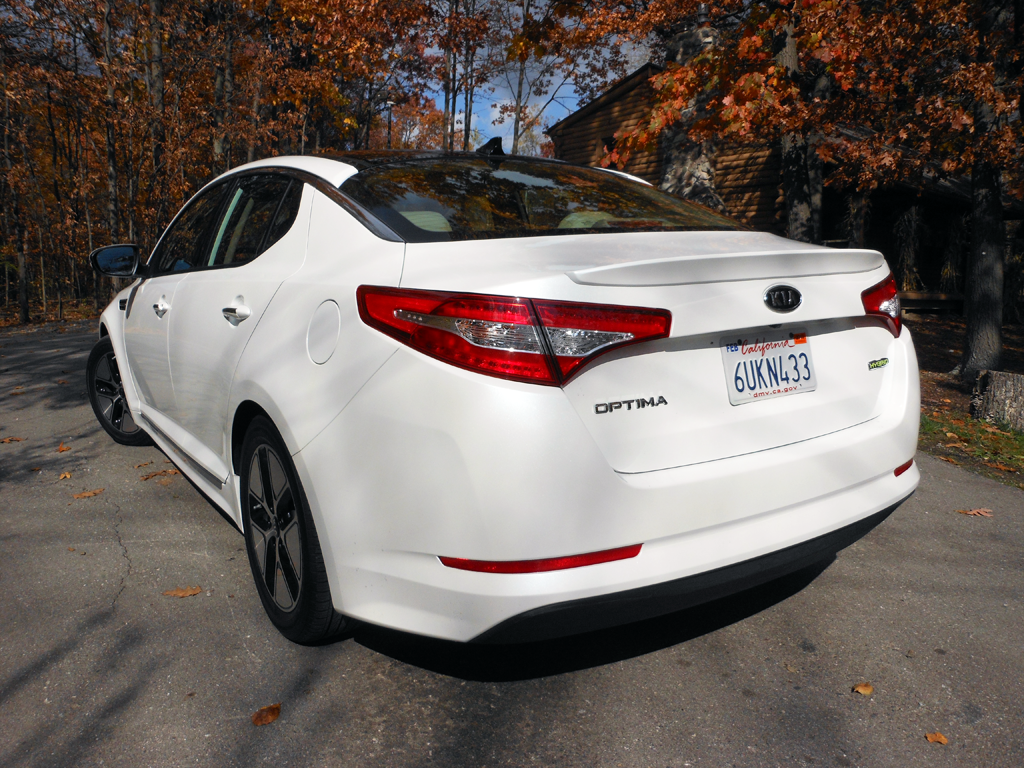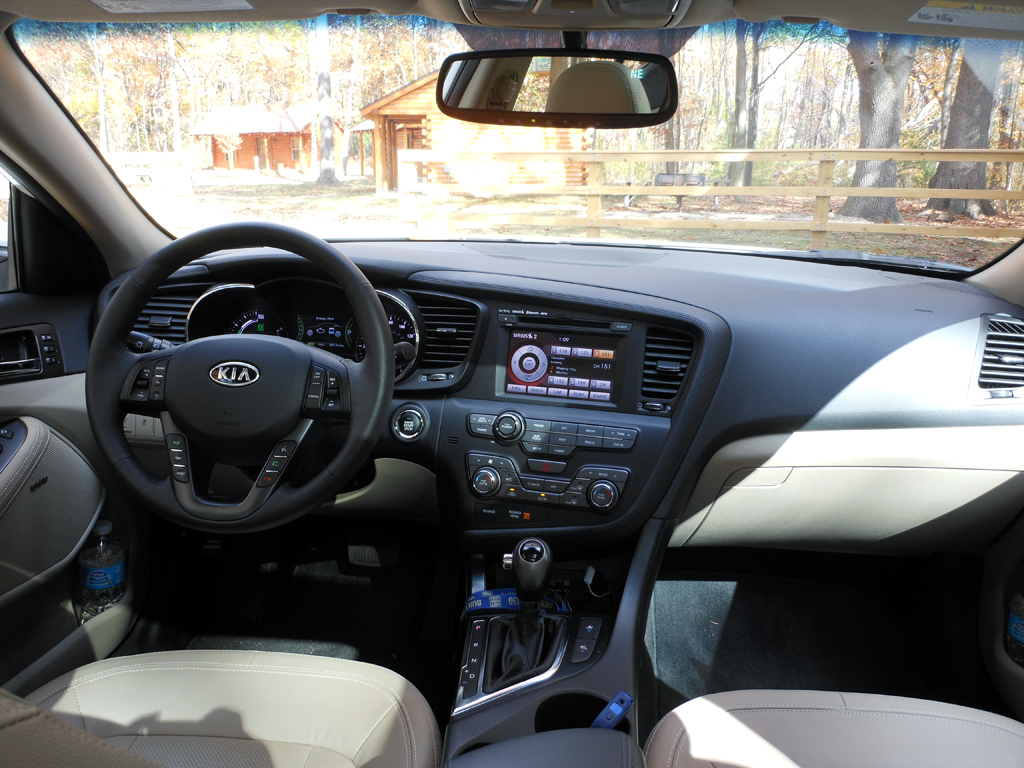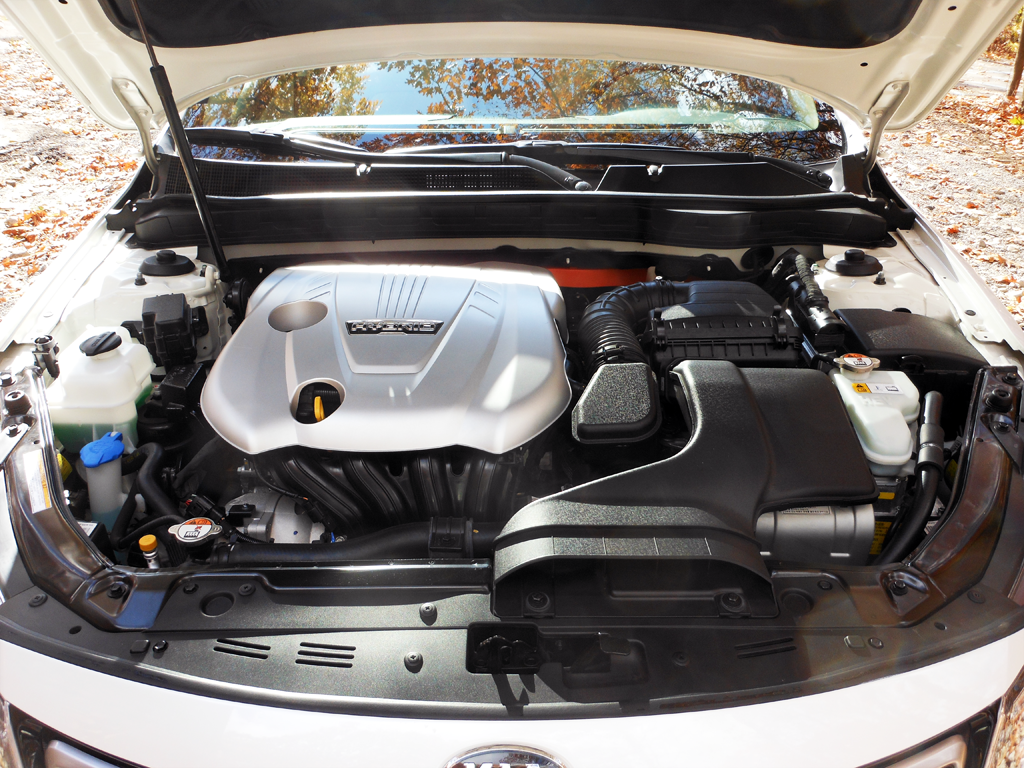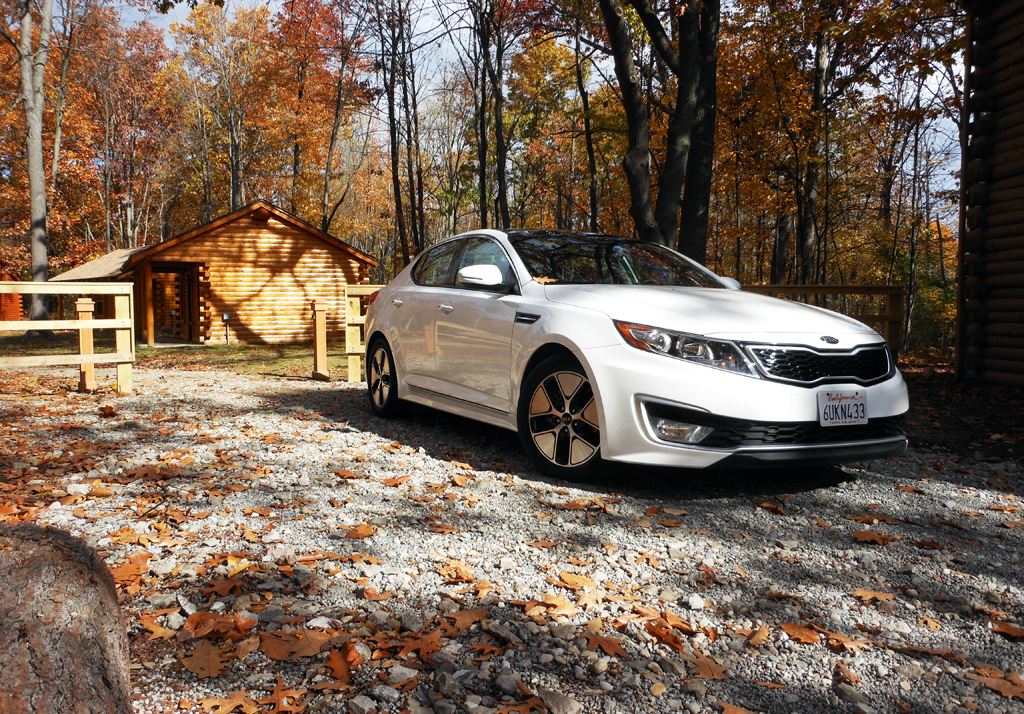William Maley
Staff Writer - CheersandGears.com
November 6, 2012
Much like the competition, Kia offers a variety of powertrains in their midsize sedan competitor, the Optima, to meet the demands of consumers. There’s a base four-cylinder model, a turbocharged-four taking the place of a V6, and hybrid model. I’ve reviewed the base four-cylinder Optima back in July, and found it to be one of best midsize sedans on sale. Now it’s time to see where the Optima Hybrid can match the high bar set by the regular Optima or not.

The differences between a normal Optima and an Optima Hybrid are very noticeable on the exterior. The biggest giveaway that you’re driving an Optima Hybrid besides the hybrid badge on the back is a unique set of seventeen-inch alloy wheels. Other changes Kia has done to the Optima Hybrid include a revised rear fascia and a new rear spoiler.
On the interior, Kia has changed the instrument cluster to one that gives information on how much battery charge there is left, an eco gauge, and a small color screen providing trip computer info. The optional navigation unit (part of the $5,350.00 premium technology package) has a screen providing information about the system.

The Optima Hybrid’s powertrain is made up of a 2.4L gas engine producing 166 HP (@ 6,000 RPM) and 154 lb-ft of torque (@ 4,250 RPM), an electric motor producing 40 HP (@ 1,400-6,000 RPM) and 151 lb-ft of torque (0 - 1,400 RPM), and a 270V lithium-polymer battery. Total output of the hybrid system is 206 HP and 195 lb-ft of torque going through a six-speed automatic.
The best way to describe the Optima Hybrid’s powertrain is ‘almost fully realized’. When pulling away from a stop, the Hybrid pulls away quickly whether on electric or hybrid power. On open roads and in traffic, I never found myself wishing for more power since the powertrain is able to keep up. The downside to this system is the transition from electric to hybrid power is very noticeable. When the switch happens, you can hear the gas engine hesitate for a brief moment and feel some sort of vibration.
The Optima Hybrid got EPA ratings of 35 City/40 Highway/37 combined. However a few weeks after turning the Optima Hybrid back in, Hyundai and Kia announced they had overstated fuel economy on certain 2011-2013 vehicles. The Optima Hybrid was one of those vehicles affected and has revised EPA fuel economy numbers of 34 City/39 Highway/36 combined. During the week, I averaged 37.2 on mostly rural and suburban roads. On the freeway, I hit 40 MPG with the cruise control set on 70 MPH.

Kia didn’t change much with handling and ride of the Optima Hybrid, which means the sporty and composed ride from the standard Optima remains. Steering on the Optima Hybrid is the same as the normal Optima as well; not a lot of feel and a surprising amount of heaviness to it. Wind and road noise on the Optima Hybrid were kept to a minimum.
The Kia Optima Hybrid is very good first effort. Building upon a good base of the normal Optima, the hybrid model possesses very good performance and decent fuel economy for the class. Kia does need to work on smoothing out the transition from electric to hybrid power though.
There is one problem for the Kia Optima Hybrid, the competition. On paper, the Toyota Camry Hybrid and the new Ford Fusion Hybrid best the Optima Hybrid in fuel economy ratings. The only thing Kia can fight back with is the amount of equipment that you can get for the price. The Optima Hybrid I had in for review cost $32,500.00. But for that price, I got heated and cooled front seats, heated back seats, panoramic sunroof, navigation, a premium sound system, and much more. To try and match the equipment level of the Optima Hybrid, you’ll have to spend a few thousand more on the competitors. Is that enough though to convince someone to check it out?
If you’re looking for a midsize hybrid to stand out, check out the Optima Hybrid. If fuel economy is a concern, look at the Camry and Fusion.

Disclaimer: Kia provided the vehicle, insurance, and one tank of gasoline.
Year - 2012
Make – Kia
Model – Optima Hybrid
Trim – N/A
Engine – 2.4L Four-Cylinder, Electric Motor
Driveline – Front-Wheel Drive, Six-Speed Automatic
Horsepower @ RPM – (Gas) 166 HP (@ 6,000 RPM) , (Electric) 40.2 HP (@ 1,400 to 6,000 RPM), (Combined) 206 HP
Torque @ RPM – (Gas) 154 lb-ft (@ 4,250 RPM), (Electric) 166 HP (@ 0 - 1,400 RPM), (Combined) 195 lb-ft
Fuel Economy: City/Highway/Combined - 34/39/36
Curb Weight – 3,490 lbs
Location of Manufacture – Hwasung, South Korea
Base Price - $25,700.00
As Tested Price - $32,500.00 (Includes $750.00 Destination Charge)
William Maley is a staff writer for Cheers & Gears. He can be reached at [email protected] or you can follow him on twitter at @realmudmonster.



-3707742431.jpg.06edf8e14f4ccf35c60d4774a543cc11.jpg)



Recommended Comments
Join the conversation
You can post now and register later. If you have an account, sign in now to post with your account.
Note: Your post will require moderator approval before it will be visible.